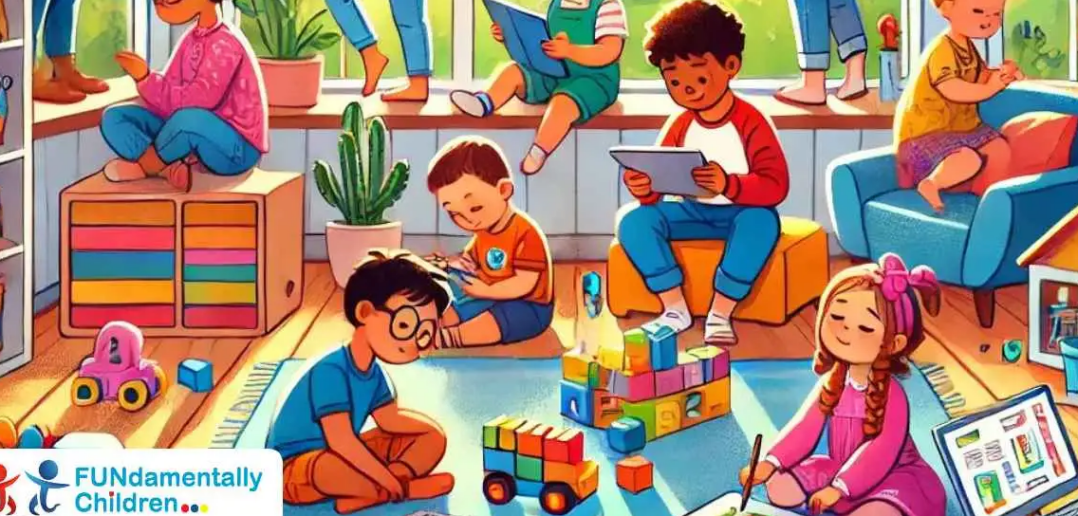The digital world is now a fundamental part of childhood. Children engage with content across various platforms, from streaming services to social media, shaping their learning, play, and social interactions. For children’s content creators, this presents both an incredible opportunity and a profound responsibility.
While digital media can educate, entertain, and inspire, it must also be designed with children’s safety, well-being, and holistic development in mind. As children increasingly engage with digital content independently, ensuring that what they consume is age-appropriate, developmentally beneficial, and safe is more important than ever.
This article explores best practices for children’s media creators, focusing on how to engage young audiences responsibly while safeguarding their well-being.
Prioritising Age-Appropriate Content and Design
One of the biggest challenges in children’s media is ensuring content is suitable for the intended age group. This extends beyond simply avoiding inappropriate themes; it involves creating narratives, interactions, and aesthetics that align with children’s cognitive, emotional, and social development stages.
Example: BBC’s CBeebies CBeebies has long been a benchmark for age-appropriate programming, ensuring content aligns with the developmental needs of preschoolers. Bright visuals, slower pacing, and interactive elements engage young viewers while ensuring their cognitive load remains manageable.
Creators should follow established frameworks such as PEGI ratings for games or the Children’s Online Privacy Protection Act (COPPA) guidelines when developing digital experiences. Platforms should also encourage parents to set up child-friendly modes that restrict access to age-inappropriate content.
Encouraging Active Engagement Over Passive Consumption
Children thrive when they are active participants rather than passive consumers of media. The best digital content encourages interaction, problem-solving, and creativity.
Example: Minecraft Education Edition Minecraft is a powerful example of an interactive platform that fosters creativity, collaboration, and learning. Unlike passive video consumption, Minecraft allows children to explore, build, and experiment, promoting problem-solving skills and teamwork.
For content creators, this means designing media that includes:
- Interactive storytelling with choice-based narratives.
- Games and apps that promote exploration and learning.
- Call-to-action moments where children are encouraged to think, create, or move.
Addressing Children’s Engagement on Social Platforms
Children’s use of social media is growing, even on platforms originally designed for older users. While platforms like YouTube, TikTok, and Instagram have child-friendly versions, engagement still carries risks, including exposure to inappropriate content, online bullying, and data privacy concerns.
Example: YouTube Kids’ Algorithmic Safeguards YouTube Kids was developed to provide a safer environment for younger users. However, early iterations saw issues with inappropriate content slipping through. YouTube has since implemented stronger algorithms and human moderation, demonstrating the importance of continuous oversight and adaptation.
Best practices for content creators include:
- Designing for child safety first: Using age-gated content, limited commenting functions, and content moderation.
- Embedding digital literacy messages: Teaching children about online safety within the content itself.
- Engaging caregivers: Providing tools and guidance for parents to navigate their children’s digital experiences effectively.
Promoting Holistic Development Through Digital Play
Healthy digital engagement should complement, rather than replace, other forms of play and learning. Content that encourages real-world activities and skills development supports children’s overall well-being.
Example: Pokémon GO and Augmented Reality Play Pokémon GO successfully blends digital and physical play by encouraging children to explore outdoor environments while engaging in the game. By integrating movement and real-world discovery, the game supports physical activity and social engagement.
For content creators, consider:
- Developing content that bridges digital and offline activities.
- Encouraging cooperative play with peers and family members.
- Providing opportunities for creativity, such as digital storytelling tools or music creation apps.
Ethical Monetisation and Data Privacy
Children’s digital experiences should never come at the cost of their privacy or financial exploitation. The ethics of monetisation in children’s media have been under scrutiny, especially regarding in-app purchases, targeted advertising, and data collection.
Example: Apple’s App Store Guidelines for Kids Apple has introduced strict guidelines for apps targeting children, including limitations on tracking, data collection, and ad placements. This move highlights the increasing industry responsibility toward ethical monetisation.
To build trust and maintain ethical standards:
- Avoid excessive in-app purchases or manipulative advertising strategies.
- Provide transparency about data collection and usage.
- Offer clear, age-appropriate consent mechanisms.
Diverse and Inclusive Representation
Representation in children’s media plays a significant role in shaping young minds. Ensuring that content reflects diverse cultures, abilities, and family structures helps foster inclusivity and empathy.
Example: Sesame Street’s Commitment to Diversity Sesame Street has consistently set the standard for inclusive storytelling, introducing characters that reflect a broad range of backgrounds and experiences. Recent additions include autistic character Julia, and Karli, a Muppet in foster care, to help children understand different life experiences.
Content creators should aim to:
- Feature diverse characters and stories that reflect real-world experiences.
- Avoid stereotypes and tokenistic portrayals.
- Collaborate with experts to ensure accurate representation.
Regulation, Responsibility, and the Future of Children’s Digital Media
As the digital landscape evolves, so too must our approach to children’s media. Content creators must stay ahead of regulatory changes, ethical considerations, and emerging trends to ensure safe and enriching experiences for young audiences.
Key considerations for the future include:
- The role of AI and machine learning in content curation and moderation.
- The expansion of immersive experiences (VR, AR) and their impact on child development.
- Strengthening global regulations to ensure consistent protection for young users across different platforms.
Children’s digital lives are complex, and the responsibility of content creators is immense. By prioritising safety, engagement, and holistic development, the industry can create media that not only entertains but also enriches young minds.
The most successful children’s media will always be those that respect the intelligence, needs, and rights of young audiences—balancing creativity with responsibility to ensure a positive and meaningful digital experience for every child.
As technology continues to shape childhood, let’s ensure it does so in a way that empowers, protects, and inspires the next generation.




